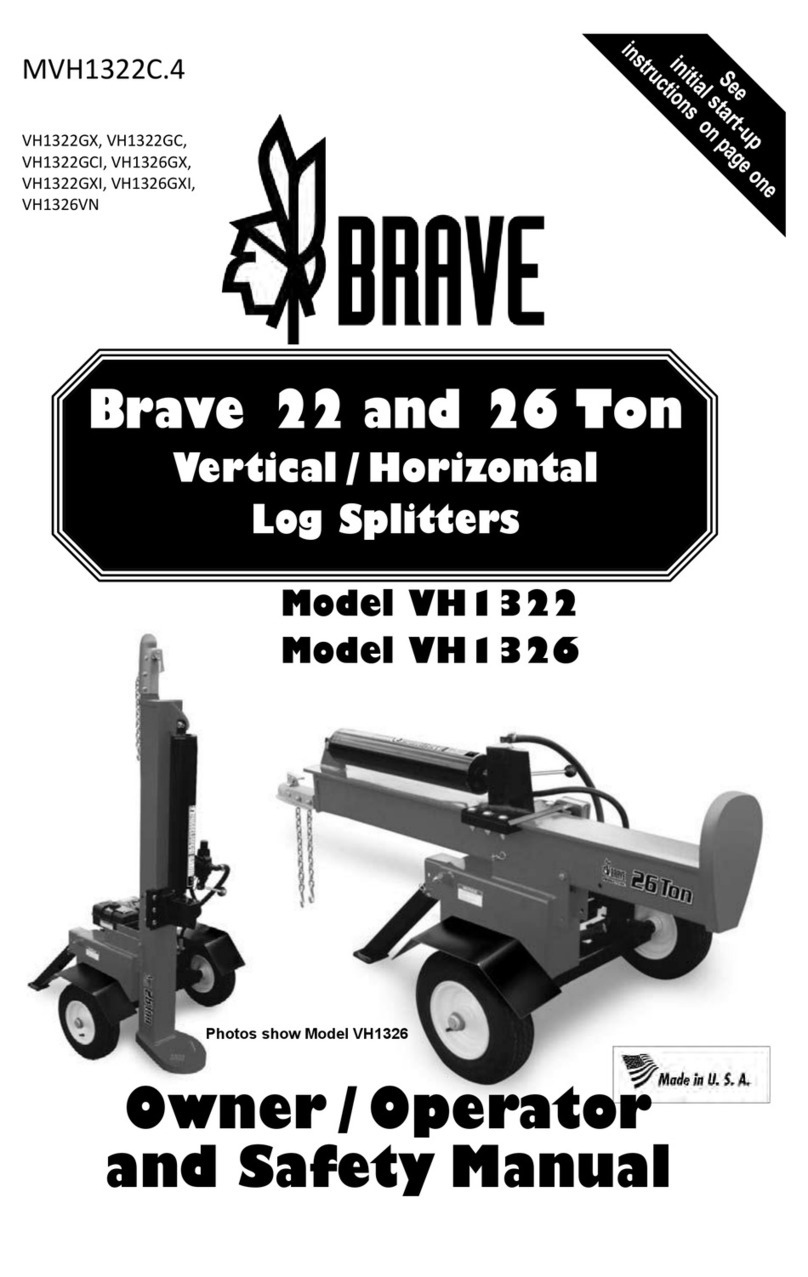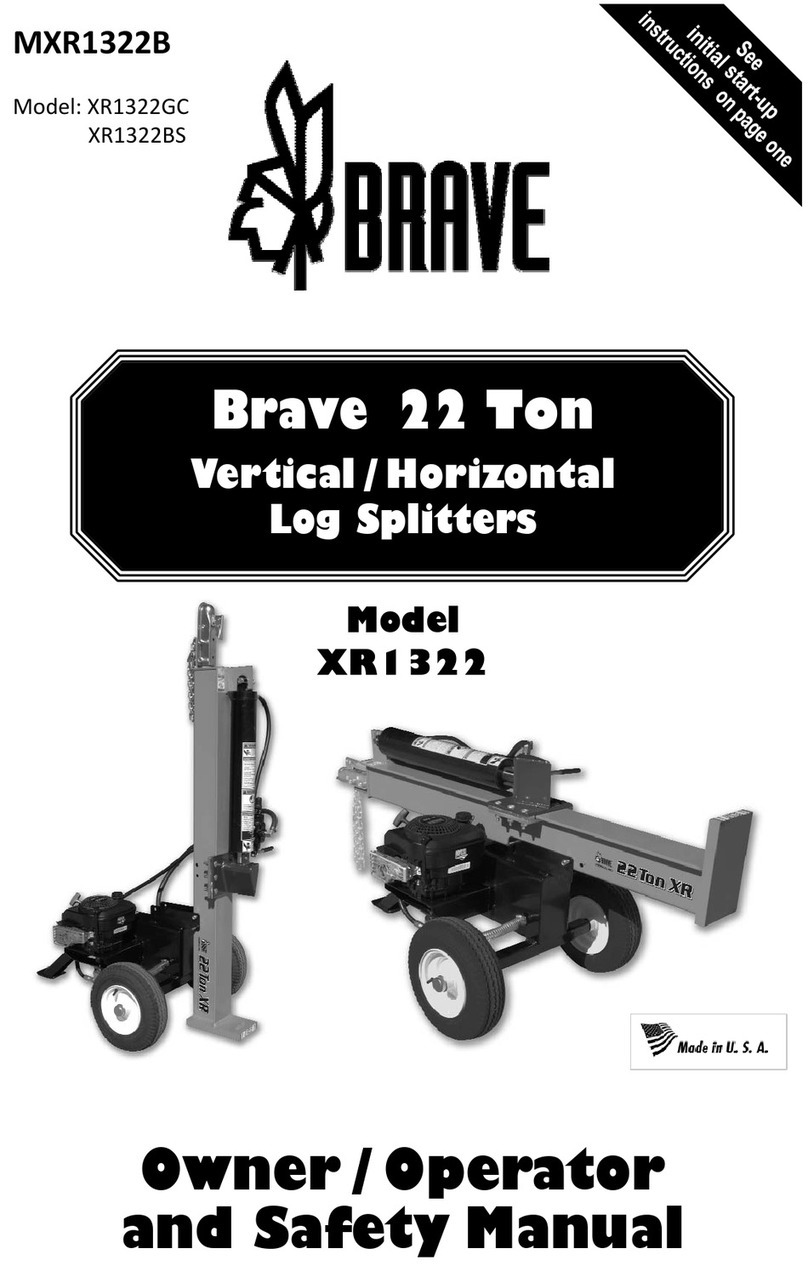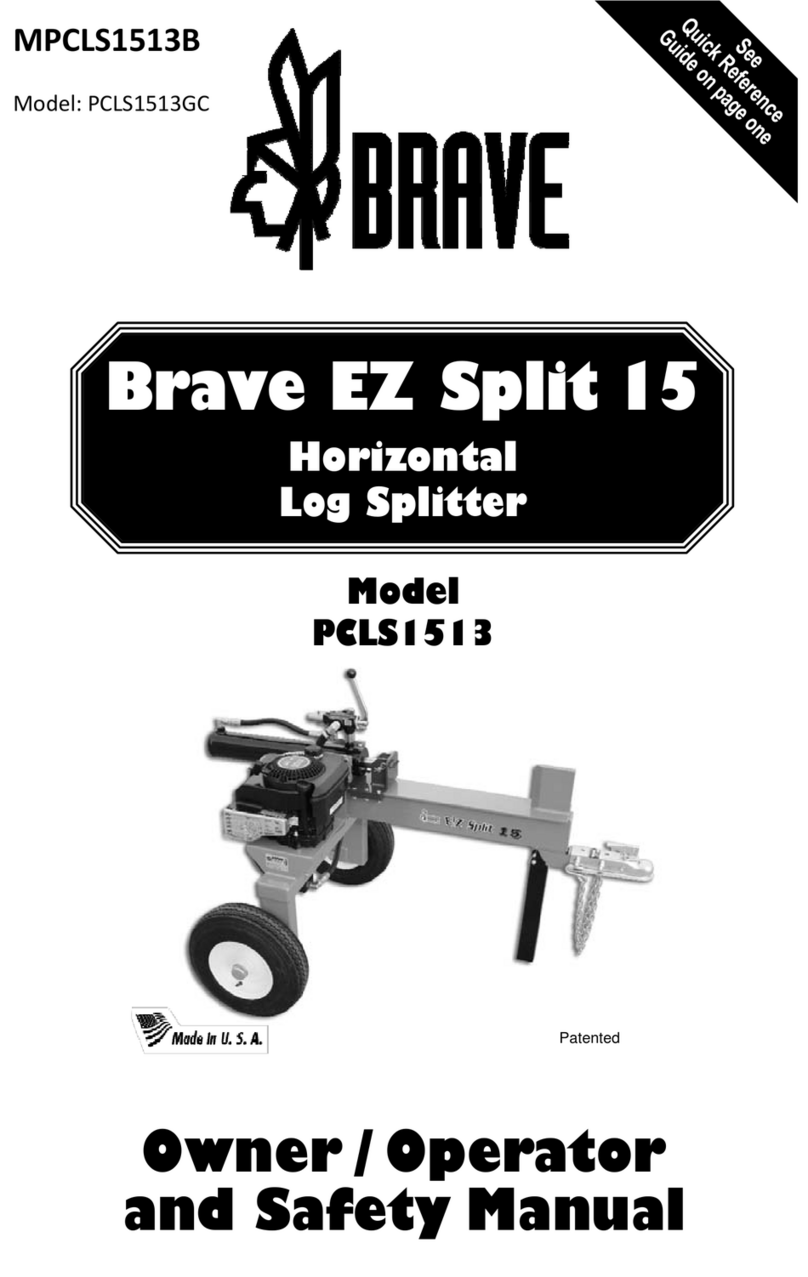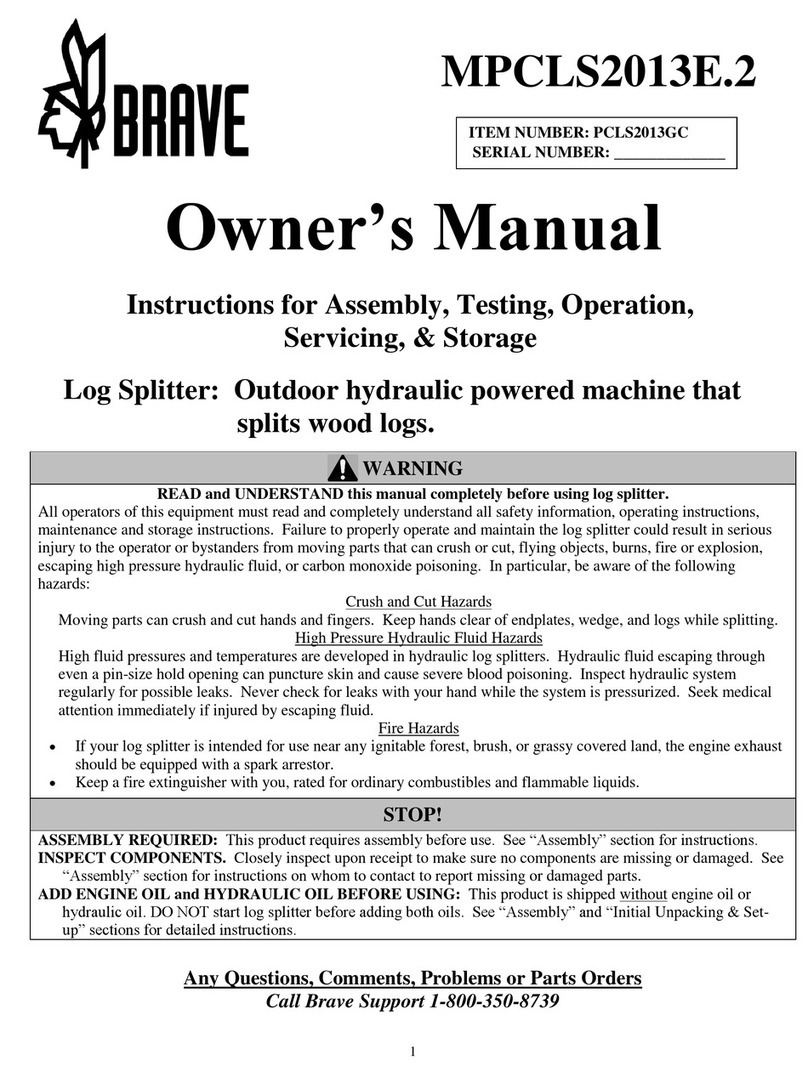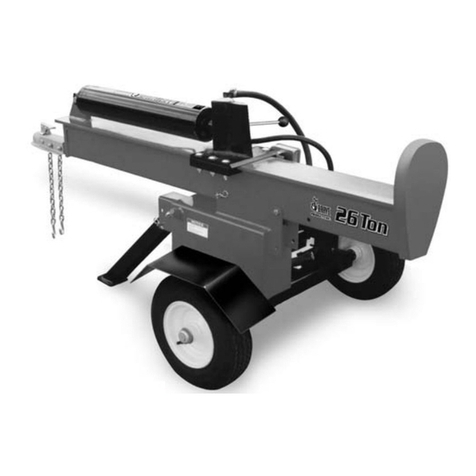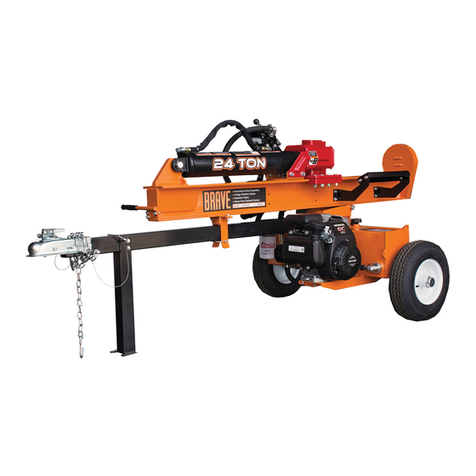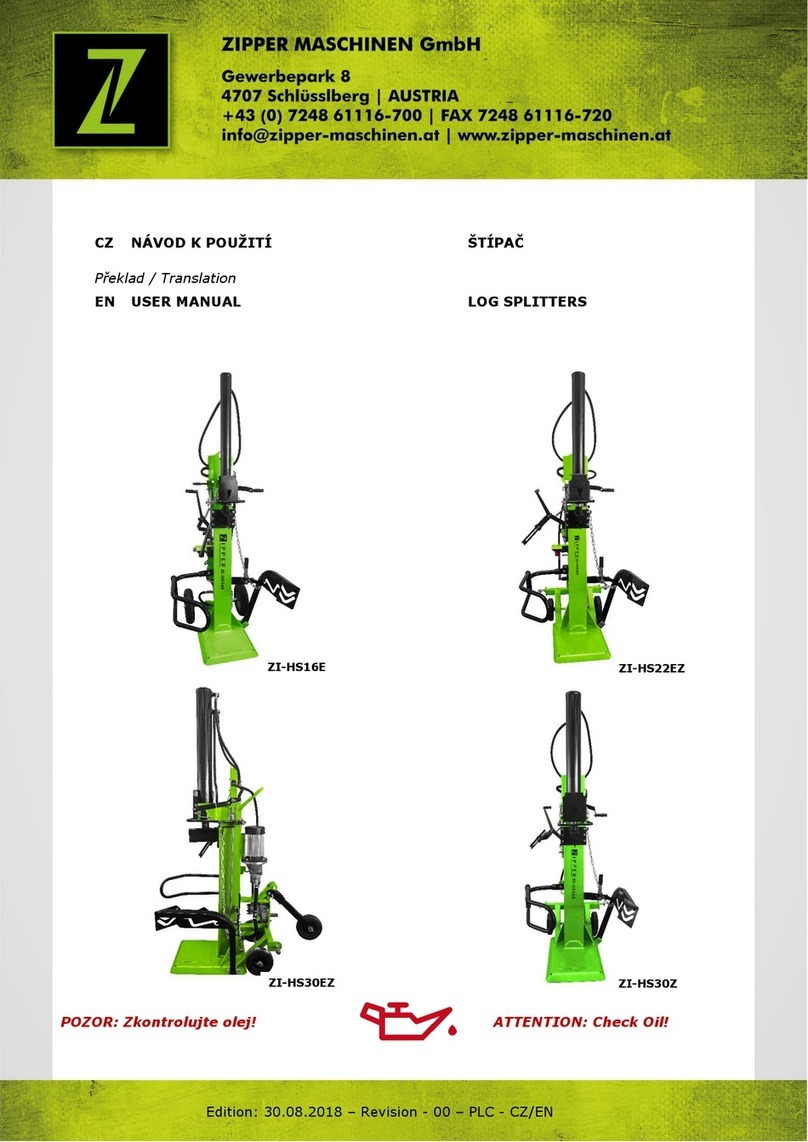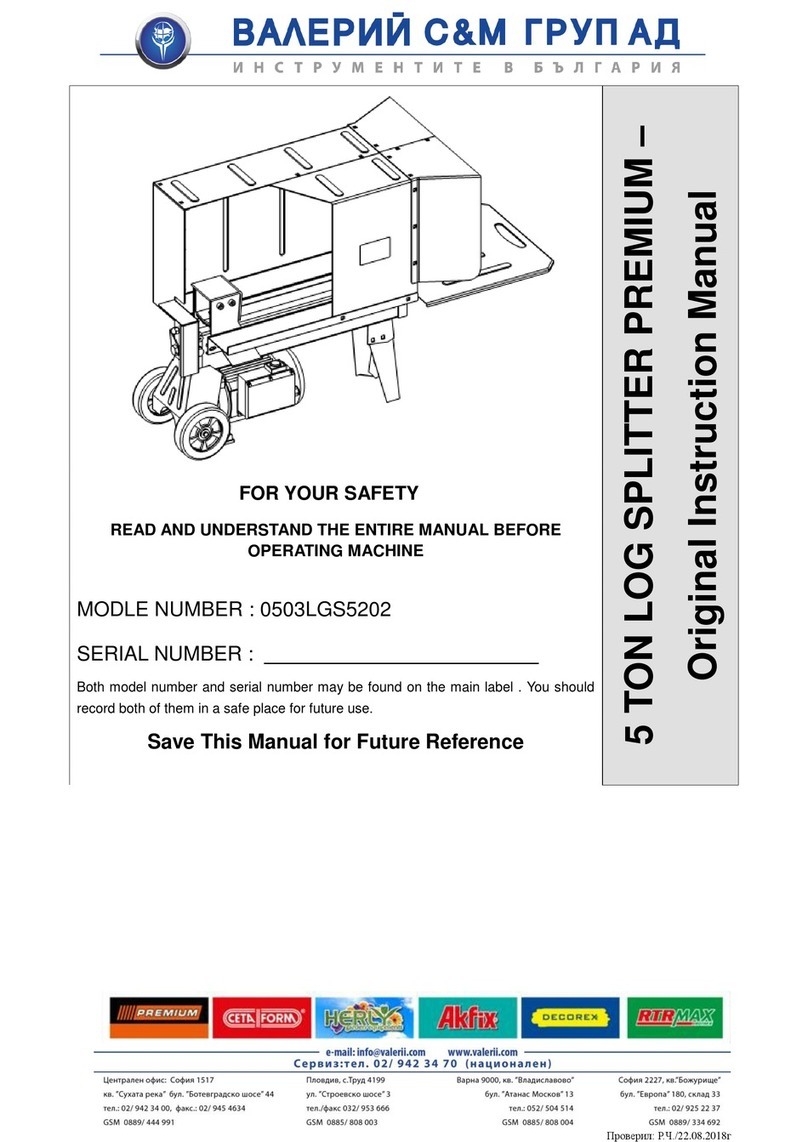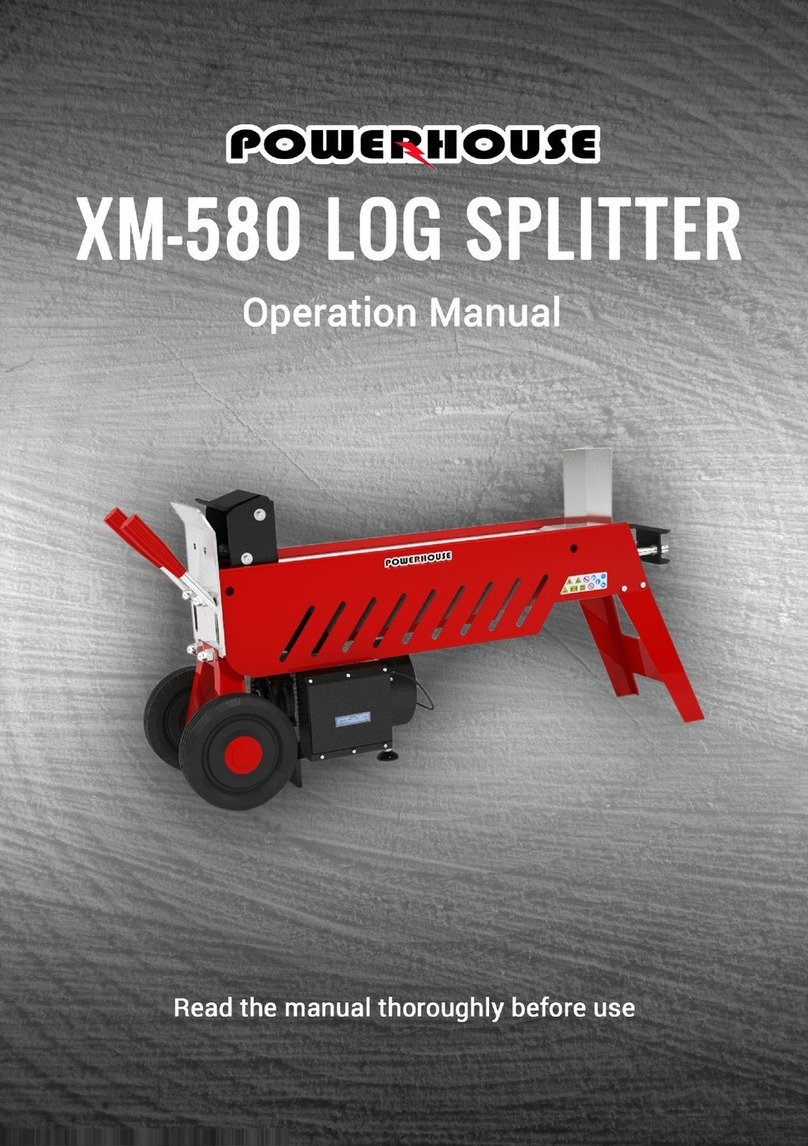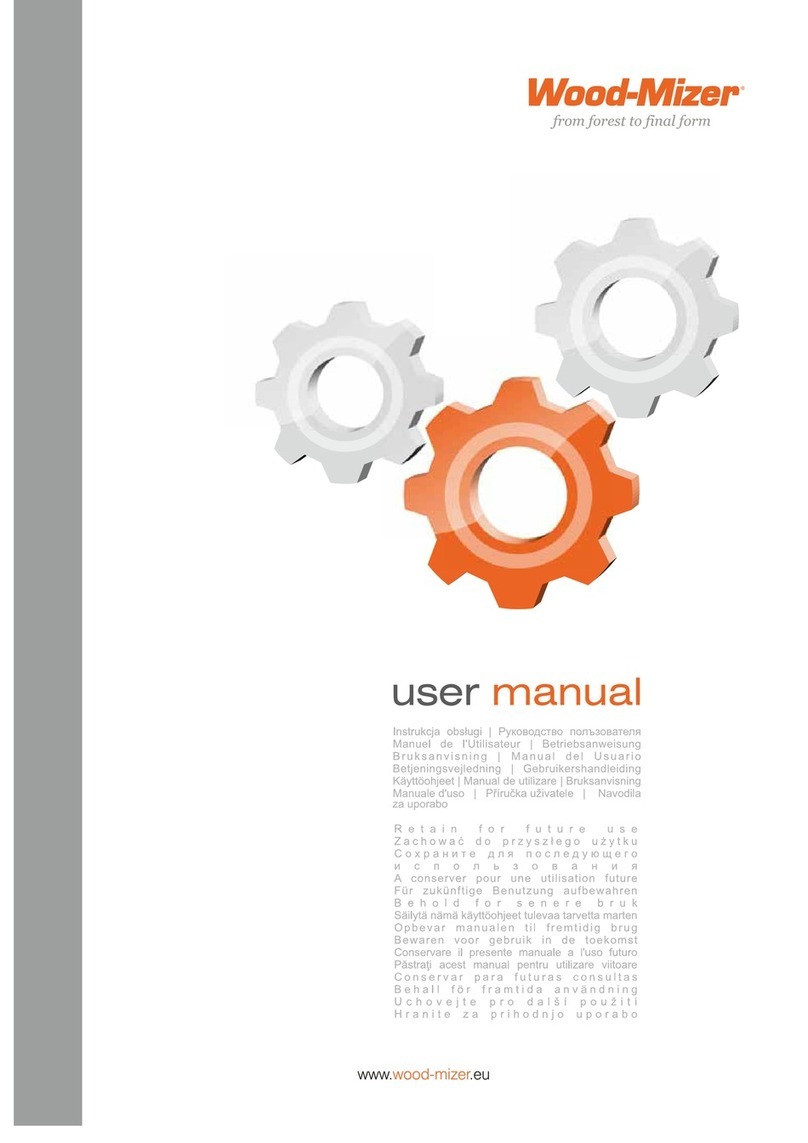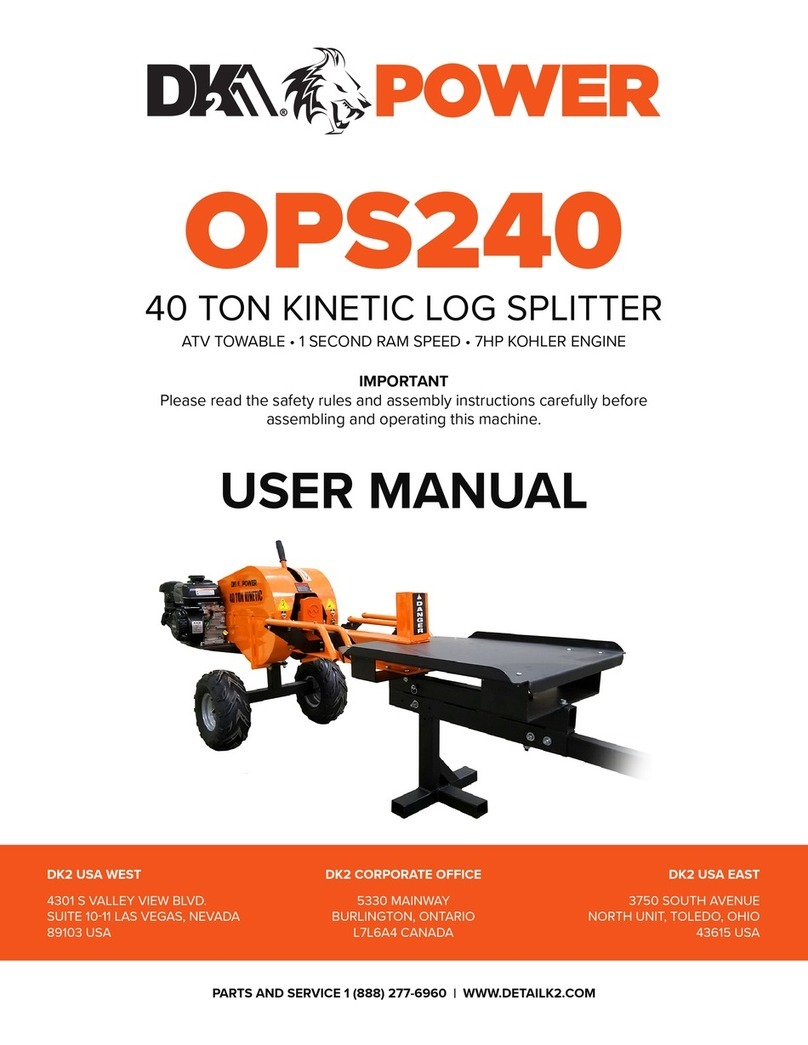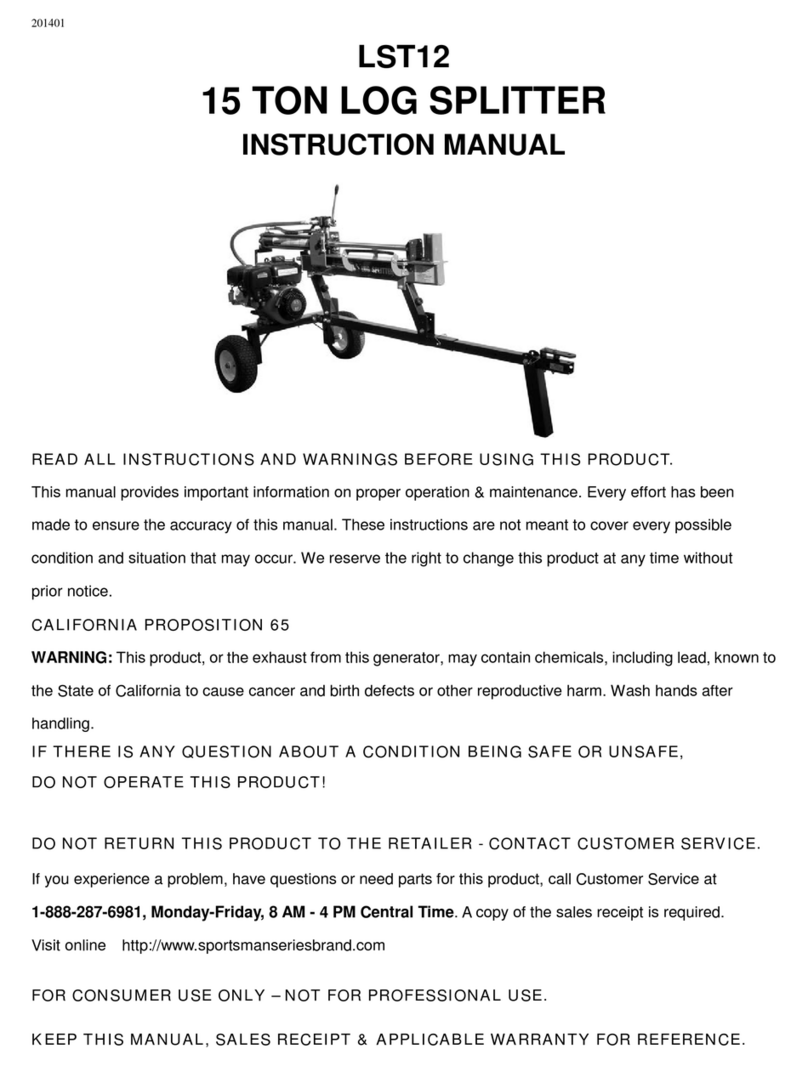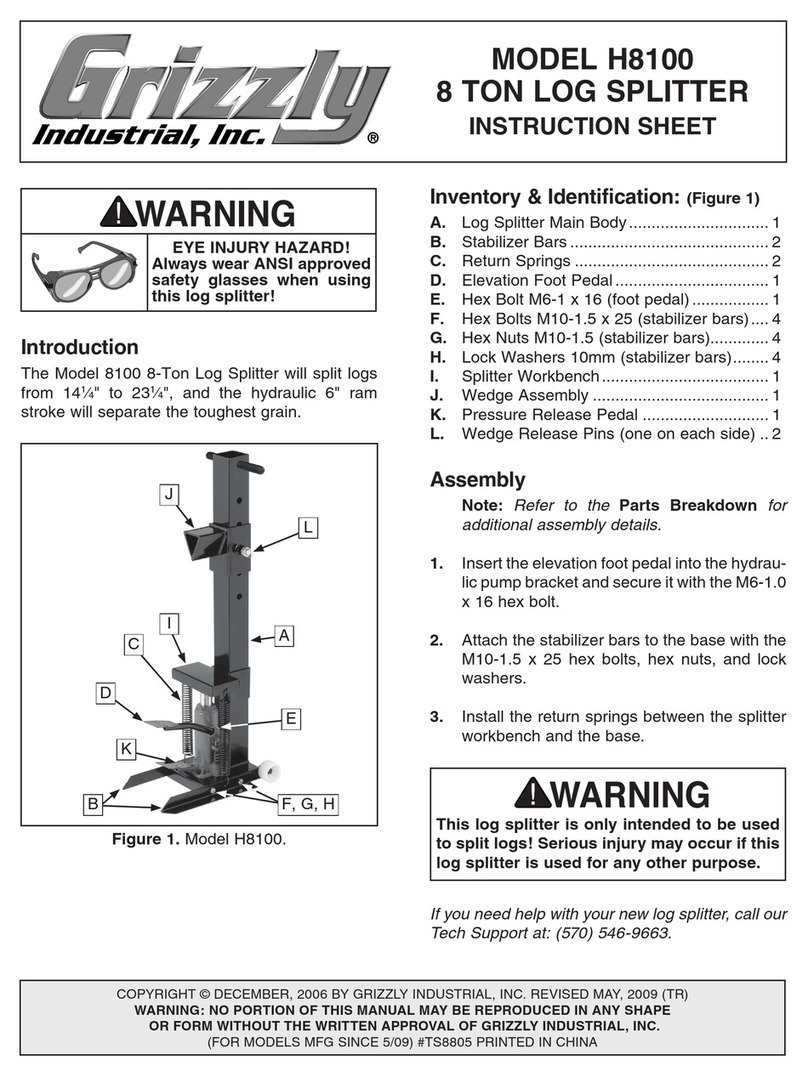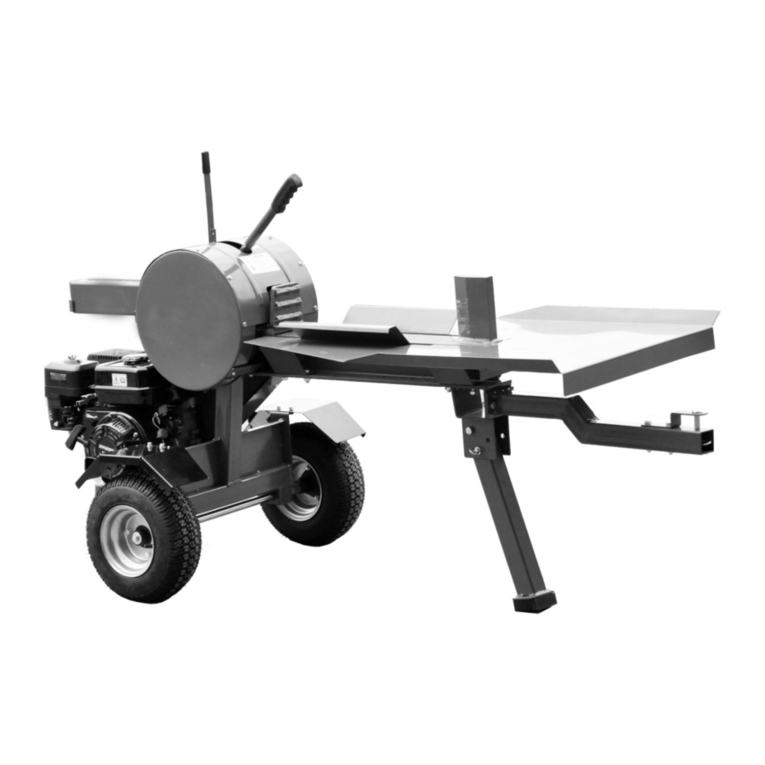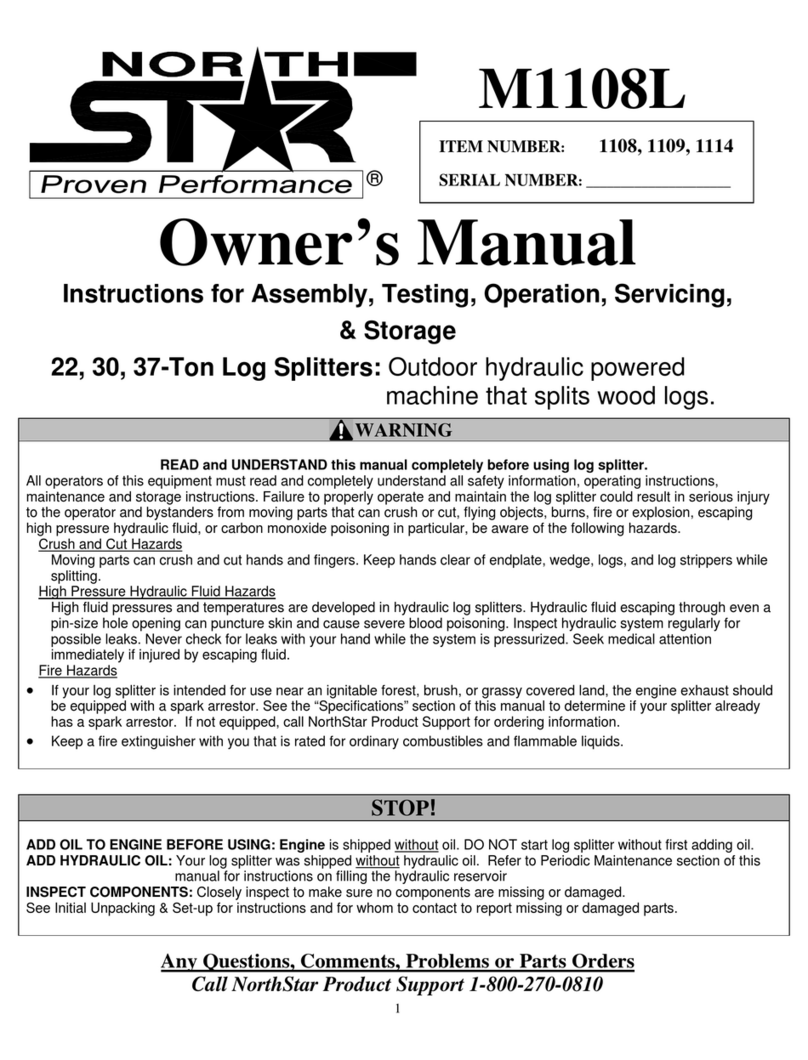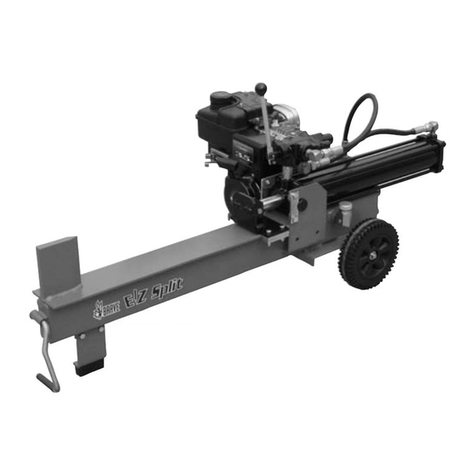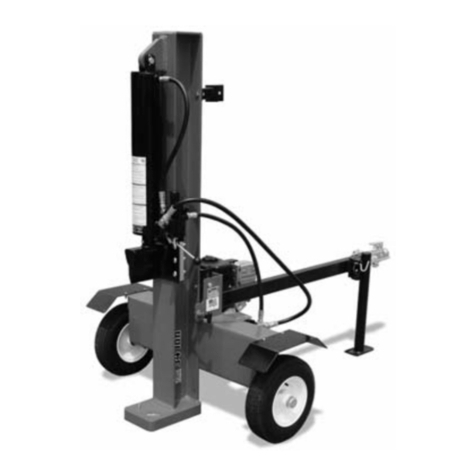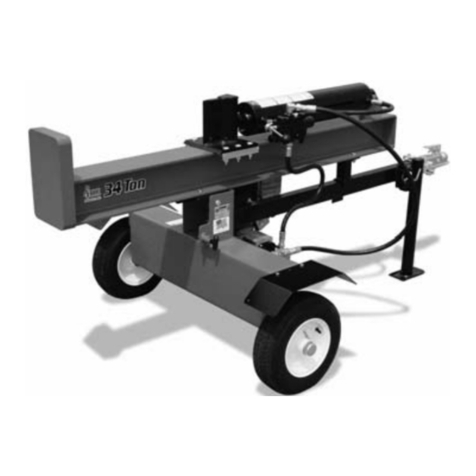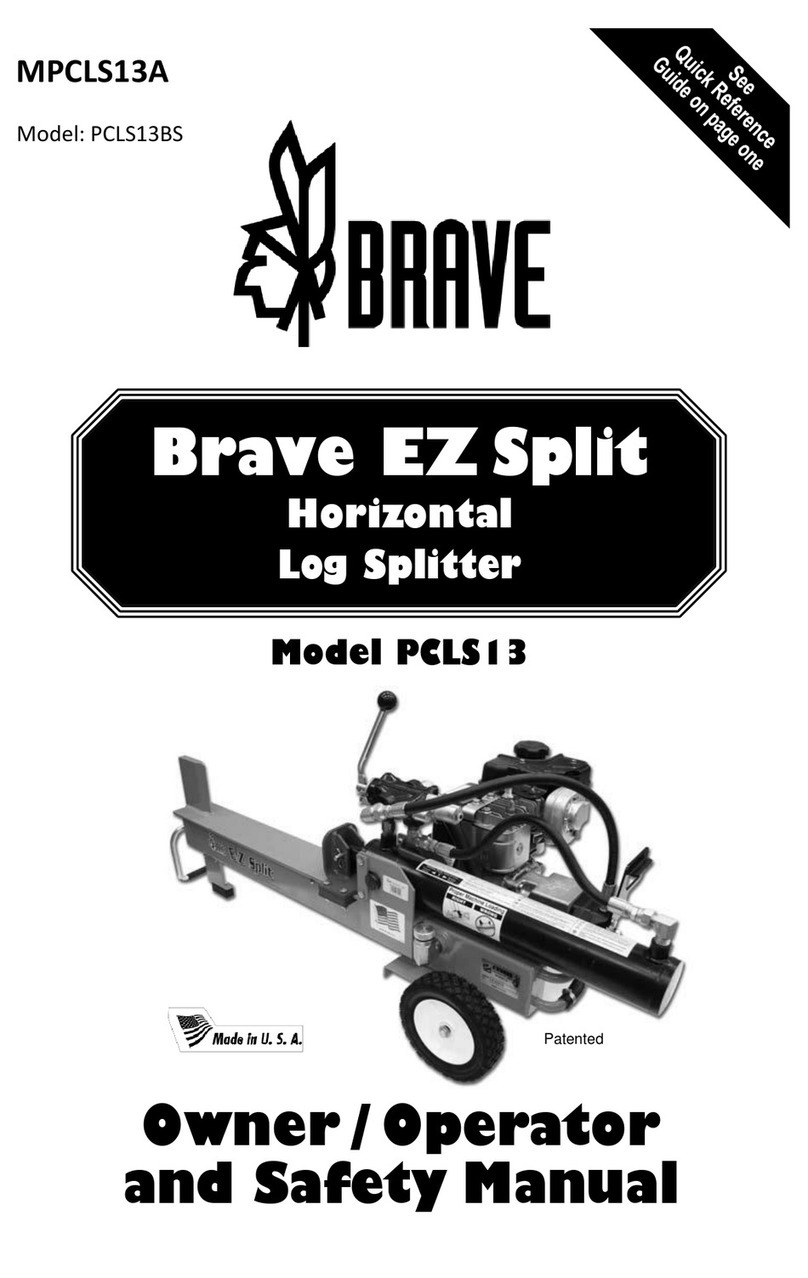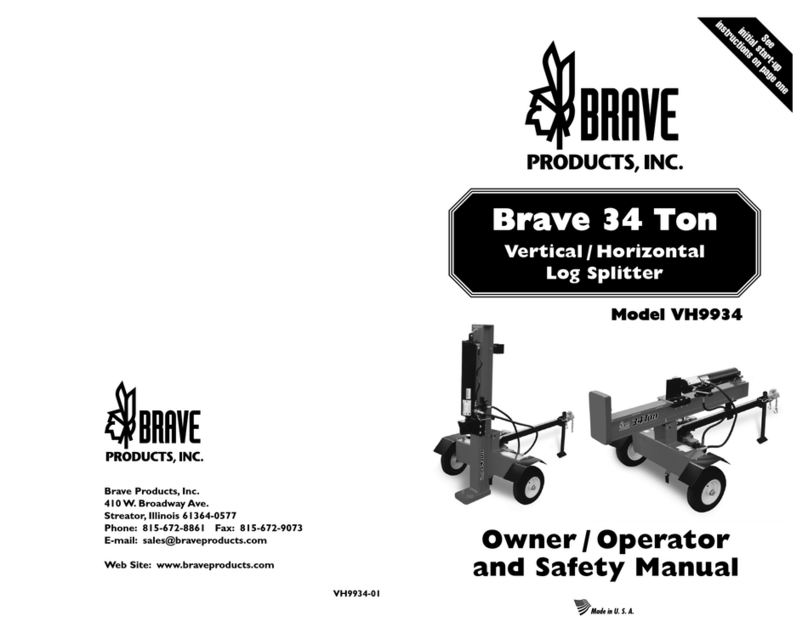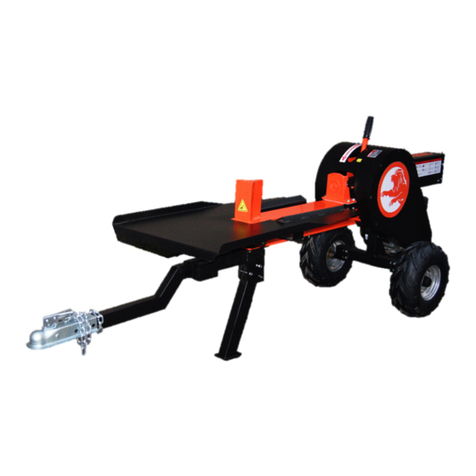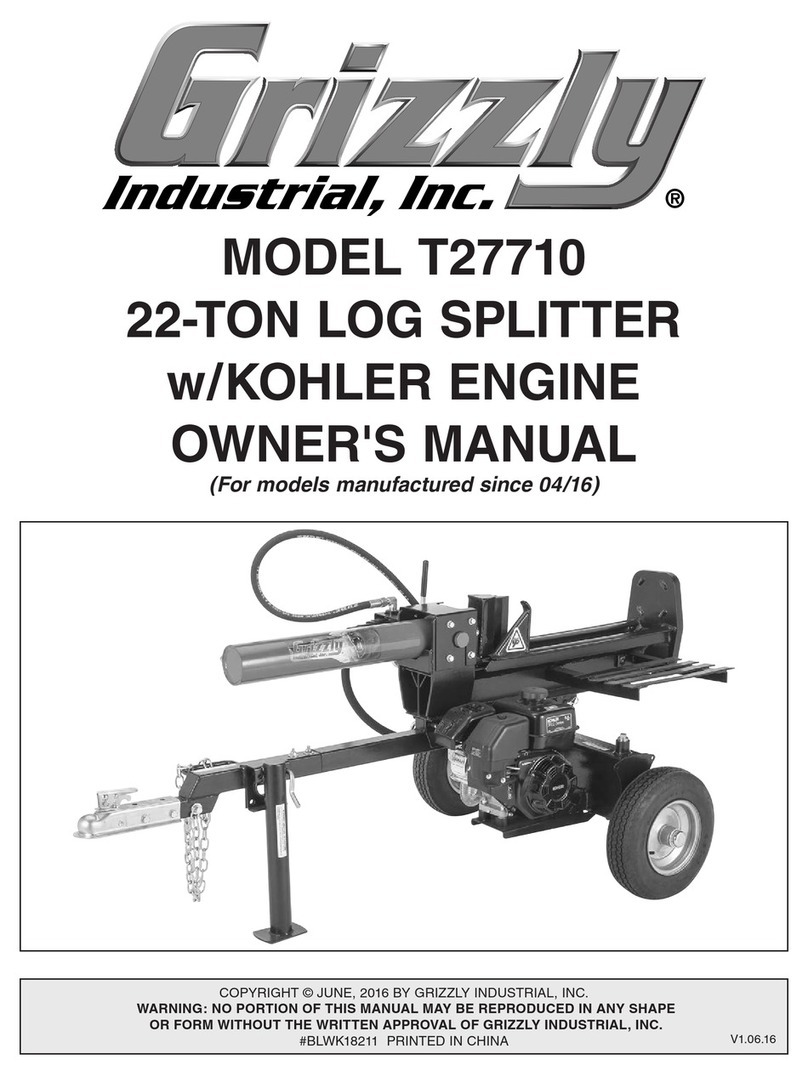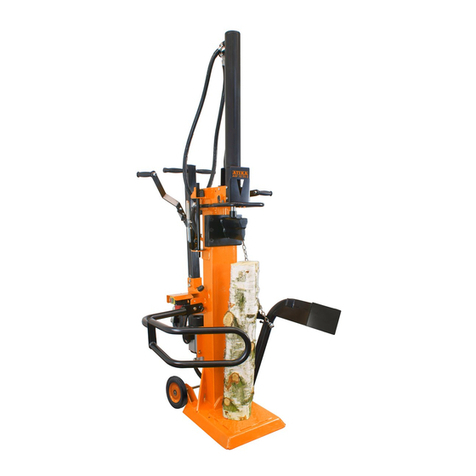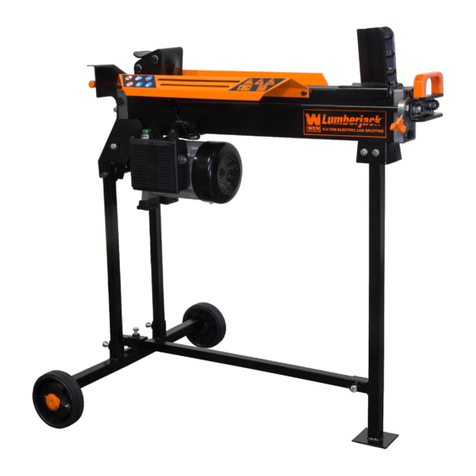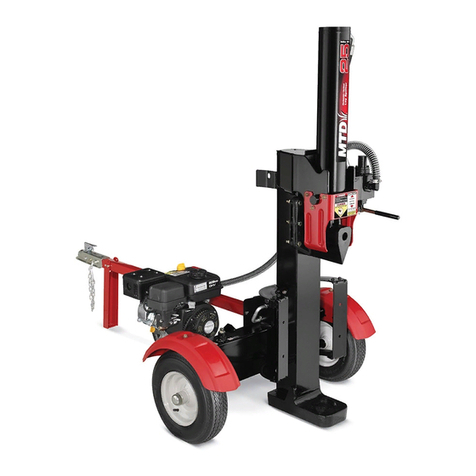General Safety Information:
•Read manual. Do not allow anyone to operate the log splitter who has not read the Owner's Manual or has not
been instructed on the safe use of the splitter. The log splitter owner should instruct all operators in safe log
splitter operation.
•Age restrictions. Never allow anyone under 16 years old to operate the log splitter. Anyone 16 years and older
must be trained and supervised by a trained adult.
•Intended use. Log splitters should only be used for splitting wood logs, lengthwise with the grain. Do not use for
other purposes as unforeseen hazards may result.
•Modifications.Never modify or alter the log splitter in any way. Modifications can create serious safety hazards
and will void the warranty.
•Attachments. Never add attachments to the splitter, except for authorized accessories supplied by the
manufacturer with instructions for safe installation and use.
•Engine speed. The maximum engine speed is preset at a safe limit. Never attempt to modify the engine speed
setting to run at a higher speed.
•Fuel/exhaust system. NEVER modify or add to the exhaust system, fuel tanks, or fuel lines. Fire can result.
•Remote control. NEVER attach a rope, cable, or other remote device to the splitting control.
•Splitting wedge. NEVER attempt to change the height or speed of the splitting wedge.
•Pressure setting. NEVER increase the pressure setting of the pump or control valve.
•Safety equipment / controls. Always operate the log splitter with all safety equipment in place and in good
working order, and all controls properly adjusted for safe operation.
•Know how to stop. Be thoroughly familiar with all controls and with the proper use of the equipment. Know
how to stop the log splitter and relieve system pressures quickly if needed.
•Operating speed. Always operate the log splitter at the manufacturer's recommended speed. The maximum
speed of the engine pump and wedge are preset within safe limits.
•Daylight only. Only use the log splitter in daylight so you can see what you are doing.
•Smoking / sparks. Never smoke while operating the log splitter, and never operate near sources of sparks or
flames.
•Under the influence. Never operate, or let anyone else operate, the log splitter while under the influence of
alcohol, drugs, or medication.
•Unattended. Never leave the machine unattended while the engine is running.
•Refueling. Never refuel the engine until it has cooled at least two minutes.
•Adjusting / repairing. Always make sure the engine is off before cleaning, repairing or adjusting the splitter,
except as recommended by the manufacturer. In addition, disconnect the spark plug and move all control handles
back and forth to relieve system pressure before changing or adjusting hydraulic system components such as
hoses, tubing, fittings or other components.
•Replace labels. Always make sure safety labels are in place and in good condition. If a safety label is missing or
not legible, order new labels because unsafe operation can result. Call 1-800-350-8739 to order new safety labels.




















